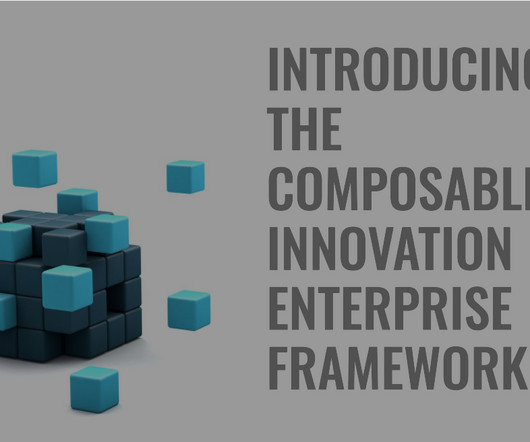The Final Perspective: A Composable Innovation Enterprise Framework
Paul Hobcraft
JUNE 12, 2023
In my view any new approach to innovation needs to aim to achieve interdependent and interlocking innovation, solving problems that have not been addressed before and offering sustainable value, impact, and returns to all involved or significantly improving on the existing solutions.

























Let's personalize your content